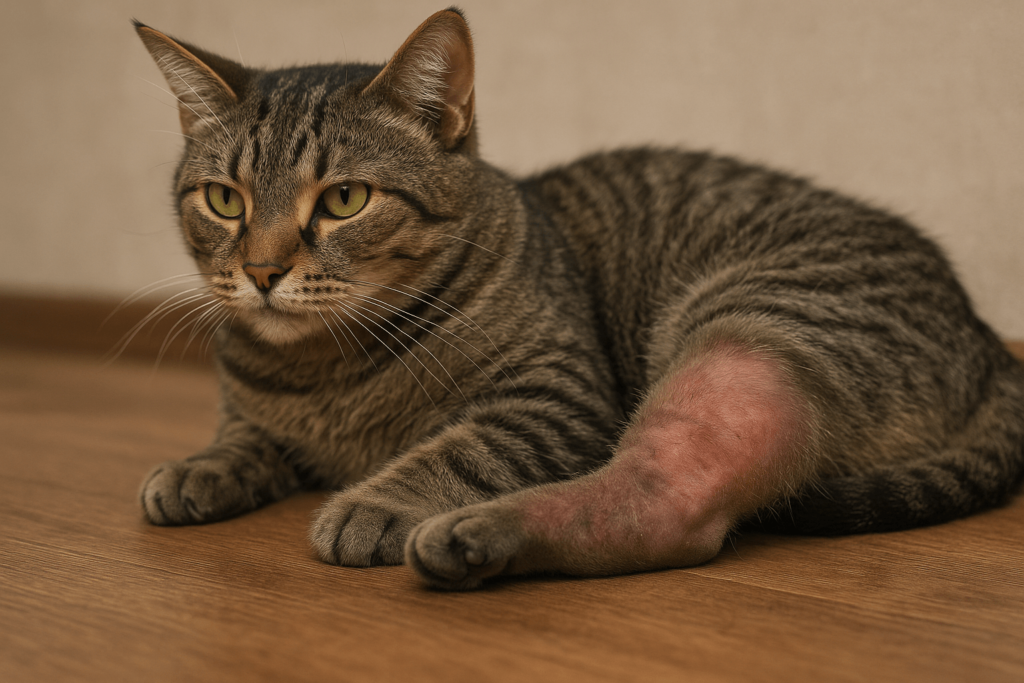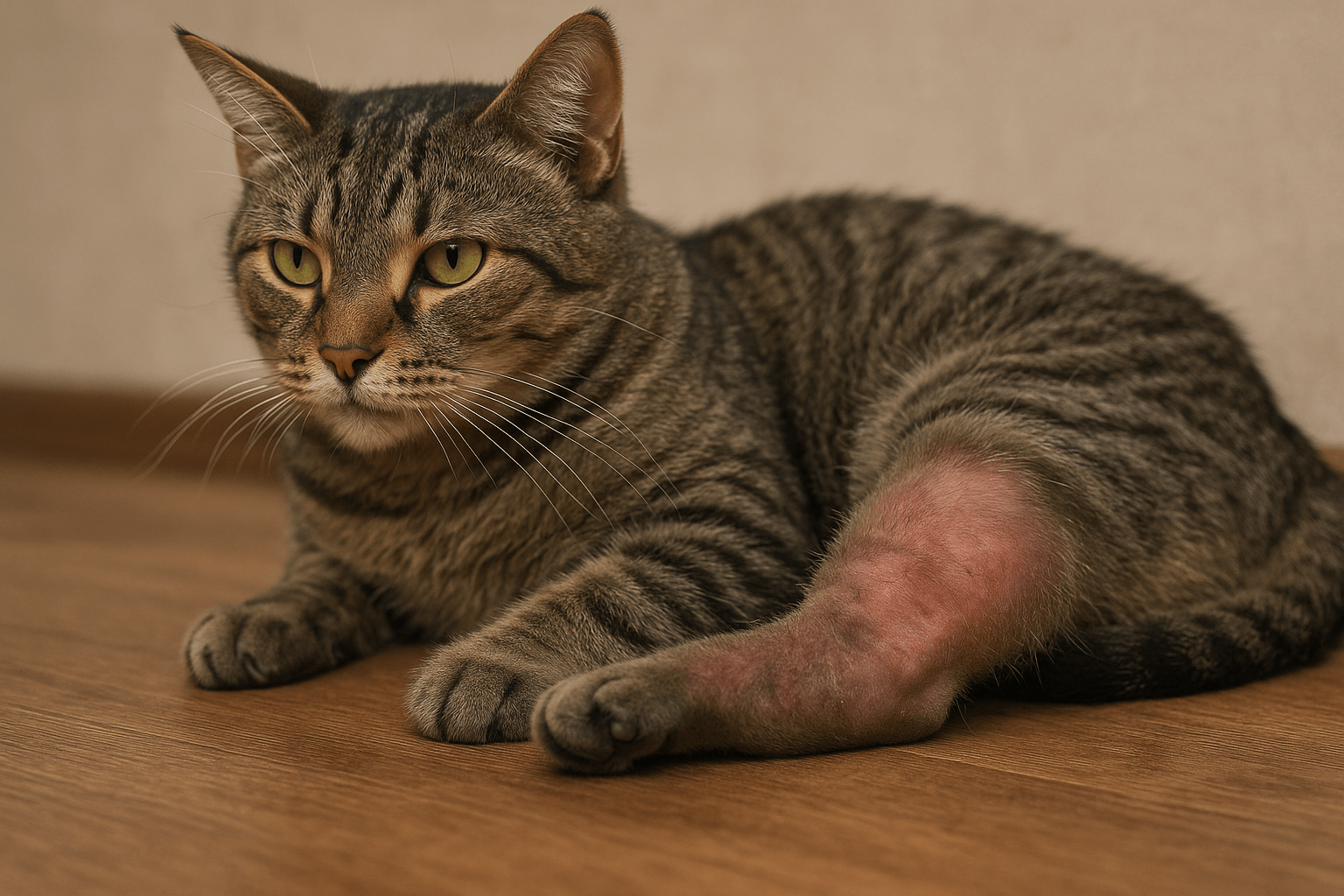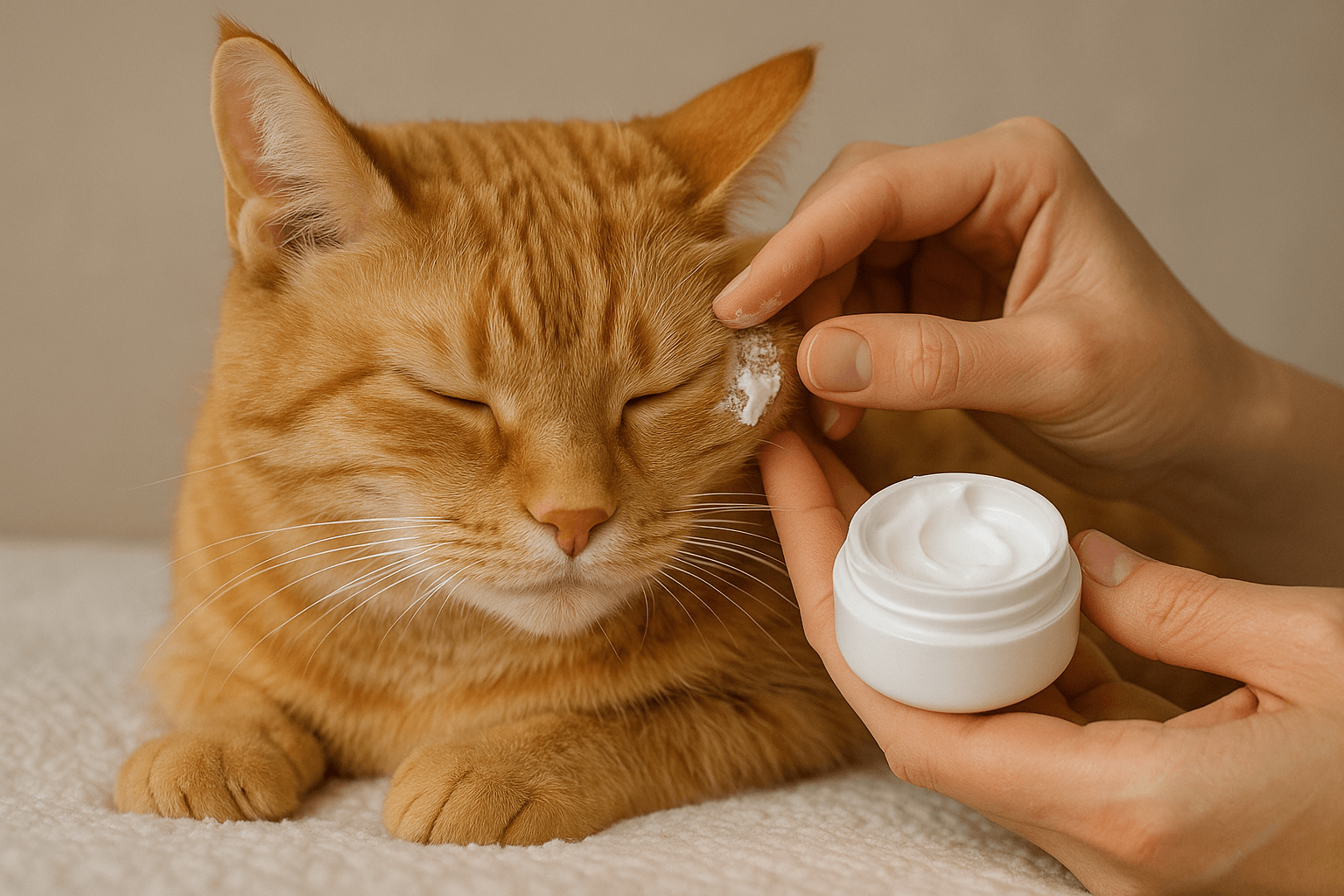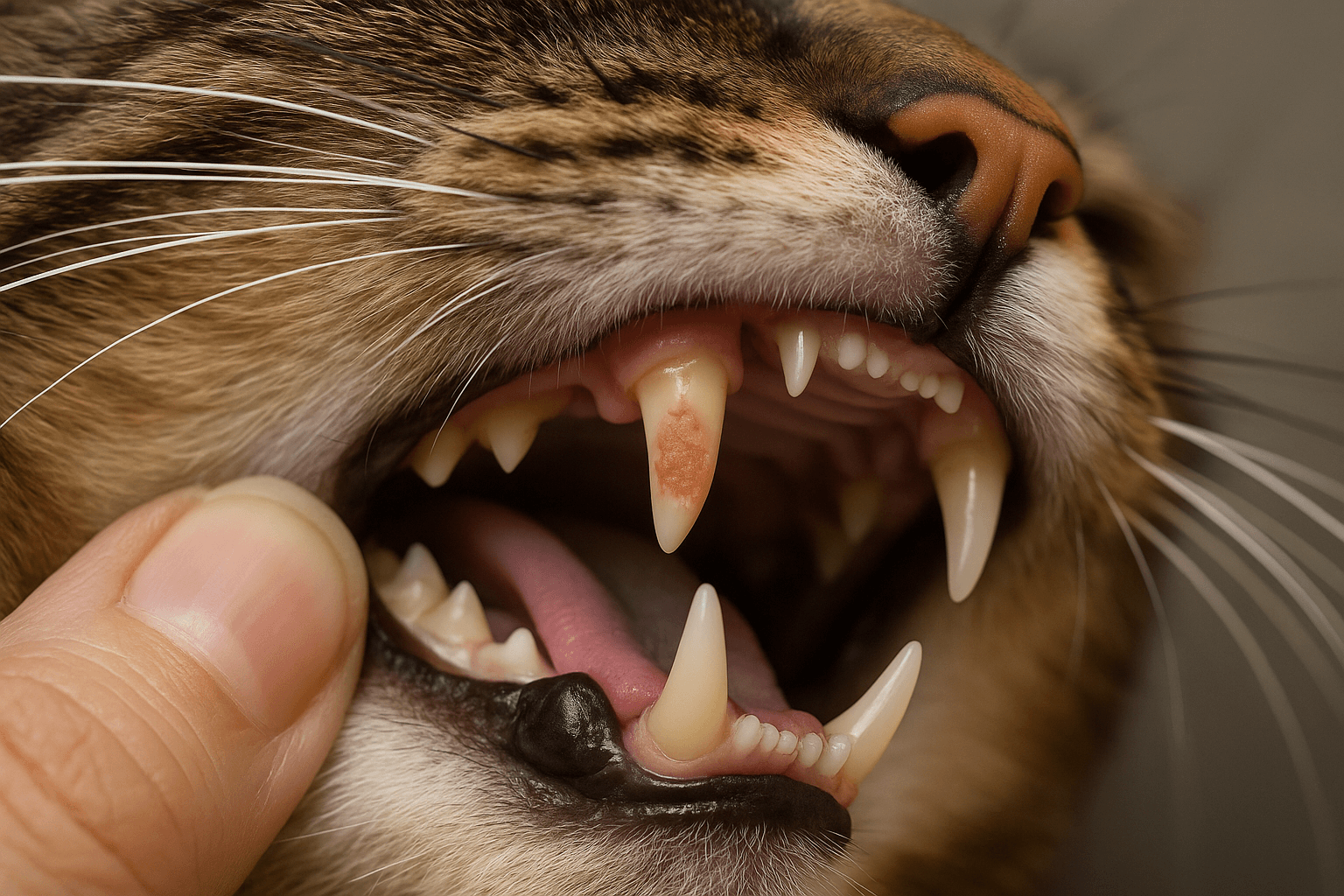What Causes a Swollen Cat Leg? Understanding the Signs and Solutions
A swollen cat leg can be alarming for any pet owner, but it’s important to stay calm and assess the situation carefully. Swelling in your cat’s leg may result from a variety of causes, ranging from minor injuries to more serious medical conditions. Whether it’s due to trauma, infection, or an underlying health issue, recognizing the signs early and seeking appropriate care is crucial. In this guide, we’ll explore the potential causes, symptoms, and treatment options for a swollen cat leg, helping you ensure your feline friend receives the best possible care.
Common Causes of a Swollen Cat Leg
Several factors can contribute to swelling in your cat’s leg. Identifying the cause is the first step toward determining the right course of action. Here are some of the most common reasons behind this concerning symptom.
Trauma or Injury:
A fall, bite, or impact can lead to bruising, fractures, or soft tissue damage, causing noticeable swelling in the affected area.Infections:
Bacterial infections from wounds or abscesses can result in localized swelling, often accompanied by warmth or discharge.Foreign Objects:
Splinters, thorns, or other foreign materials lodged in the leg can trigger inflammation and swelling as the body reacts to the intrusion.Arthritis or Joint Issues:
Older cats may experience joint inflammation or arthritis, leading to swelling and reduced mobility in their legs.Allergic Reactions:
Allergies to insect bites, plants, or chemicals can cause sudden swelling in the affected limb.
Understanding these potential causes can help you narrow down the source of the problem and decide whether to consult a veterinarian promptly.

Signs to Watch For: When Is a Swollen Cat Leg Serious?
While some cases of swelling may resolve on their own, others require immediate veterinary attention. Recognizing warning signs can make all the difference in ensuring your cat’s well-being.
Limping or Difficulty Walking:
If your cat avoids putting weight on the swollen leg, it could indicate pain or structural damage.Redness or Warmth Around the Area:
These symptoms often point to infection or inflammation that needs prompt treatment.Discharge or Open Wounds:
Any sign of pus, blood, or fluid leaking from the leg suggests an infection or injury requiring professional care.Behavioral Changes:
Lethargy, loss of appetite, or unusual aggression may accompany a swollen leg, signaling systemic issues like fever or pain.Sudden Swelling Without Obvious Cause:
Rapid onset swelling without trauma or visible injury can indicate a serious condition, such as a blood clot or allergic reaction.
If you notice any of these signs, it’s essential to seek veterinary advice to prevent complications.
Check this guide 👉Cat Swollen Nose: Best 7 Expert Tips!
Check this guide 👉Cat Swollen Chin: Best 7 Health Tips!
Check this guide 👉Cat Swollen Eye Treatment at Home: Best 7 Expert Tips!
Possible Causes of Swollen Cat Legs | Symptoms to Look Out For |
|---|---|
Trauma (falls, bites, impacts) | Limping, bruising, swelling |
Infection (bacterial or abscess) | Redness, warmth, discharge |
Foreign object embedded in the leg | Localized swelling, irritation |
Arthritis or joint problems | Stiffness, difficulty jumping |
Allergic reactions | Sudden swelling, itching, hives |
Steps to Take at Home Before Visiting the Vet
If your cat has a swollen leg, there are steps you can take at home to provide temporary relief while preparing for a vet visit. These measures can help reduce discomfort and prevent further complications.
Examine the Leg Carefully:
Gently inspect the swollen area for wounds, foreign objects, or signs of infection. Avoid applying pressure if your cat seems sensitive.Apply a Cold Compress:
Use a clean cloth soaked in cool water to gently reduce swelling. Do not use ice directly, as it can harm your cat’s skin.Keep Your Cat Calm and Rested:
Limit movement and activity to prevent worsening the injury or swelling. Create a quiet space for them to relax.Monitor for Changes:
Keep track of any changes in swelling, behavior, or appetite, as this information will be helpful for the vet.Avoid Self-Medicating:
Never give your cat over-the-counter medications like ibuprofen, as they can be toxic to felines.
These steps can offer temporary relief, but professional veterinary care remains the safest option for addressing the root cause.
Treatment Options for a Swollen Cat Leg
Once you’ve consulted a veterinarian, they will recommend a treatment plan based on the underlying cause of the swelling. Here are some common approaches to managing and resolving a swollen cat leg.
Antibiotics for Infections:
If bacteria are causing the swelling, your vet may prescribe antibiotics to clear the infection and promote healing.Pain Relief Medications:
Anti-inflammatory drugs or painkillers can help alleviate discomfort and reduce inflammation in the affected leg.Wound Cleaning and Dressing:
For injuries or abscesses, the vet may clean the wound thoroughly and apply dressings to aid recovery.Surgery for Severe Cases:
In situations involving fractures or deep abscesses, surgical intervention may be necessary to repair the damage.Physical Therapy for Chronic Issues:
Cats with arthritis or joint problems may benefit from physical therapy or lifestyle adjustments to improve mobility.
With proper treatment, most cats recover fully from a swollen leg, but early intervention is key to achieving the best outcome.
Preventive Measures to Avoid Swollen Legs
Taking preventive steps can reduce the risk of your cat developing a swollen leg. These proactive measures focus on minimizing hazards and maintaining overall health.
Provide Safe Play Areas:
Ensure your home and outdoor spaces are free of sharp objects or dangerous obstacles that could injure your cat.Regular Vet Check-Ups:
Routine veterinary visits help detect early signs of joint issues or other conditions that might lead to swelling.Trim Nails Properly:
Overgrown nails can cause discomfort or injury, so keep them trimmed to prevent accidental scratches or punctures.Supervise Outdoor Time:
If your cat ventures outside, supervise their activities to protect them from fights, falls, or encounters with wildlife.Maintain a Healthy Diet:
Proper nutrition supports strong bones and joints, reducing the likelihood of injuries or chronic conditions.
By incorporating these habits into your routine, you can lower the chances of your cat experiencing leg swelling.
How to Comfort a Cat with a Swollen Leg
When your cat is dealing with a swollen leg, providing comfort is essential to help them cope with discomfort and stress. These tips can make the recovery process smoother for both you and your pet.
Create a Quiet Space:
Designate a calm, cozy area where your cat can rest away from noise and disturbances.Offer Soft Bedding:
Provide plush, supportive bedding to cushion the swollen leg and encourage relaxation.Limit Physical Activity:
Restrict jumping, running, or climbing to prevent aggravating the injury or swelling.Use Gentle Handling Techniques:
Handle your cat carefully to avoid causing additional pain or distress during examinations or cuddles.Reward Positive Behavior:
Offer treats or praise to reinforce calm behavior and cooperation during recovery.
Comforting your cat fosters trust and helps them feel secure during challenging times.
Long-Term Care for Chronic Conditions
If your cat’s swollen leg stems from a chronic condition like arthritis, ongoing care is vital to manage symptoms and maintain their quality of life. These strategies support long-term well-being.
Joint Supplements:
Omega-3 fatty acids and glucosamine supplements can improve joint health and reduce inflammation over time.Weight Management:
Keeping your cat at a healthy weight reduces strain on their joints and minimizes discomfort.Modified Exercise Routine:
Engage your cat in low-impact activities, such as gentle play or short walks, to maintain mobility without overexertion.Environmental Adjustments:
Add ramps or steps to furniture to help your cat navigate their surroundings more easily.Regular Monitoring:
Schedule periodic check-ups to track your cat’s progress and adjust treatment plans as needed.
With consistent care and attention, you can help your cat live comfortably despite chronic conditions affecting their legs.
Frequently Asked Questions About Swollen Cat Legs
What should I do if my cat’s leg is swollen?
Examine the leg carefully, apply a cold compress, and contact your veterinarian as soon as possible.
Can a swollen leg heal on its own?
Minor swelling from mild injuries may resolve independently, but persistent or severe swelling requires veterinary care.
How can I tell if my cat is in pain?
Signs of pain include limping, vocalizing, hiding, or reluctance to move the affected leg.
Is swelling always caused by an injury?
No, swelling can also result from infections, allergies, or underlying health conditions like arthritis.
How long does it take for a swollen leg to heal?
Healing time varies depending on the cause, ranging from days for minor issues to weeks or months for chronic conditions.
Prioritizing Your Cat’s Health and Well-Being
A swollen cat leg is not something to ignore—it can signal anything from a minor injury to a serious medical condition. By staying vigilant, recognizing the signs, and seeking timely veterinary care, you can ensure your feline companion receives the attention they need to recover fully. Remember, prevention and observation are key components of responsible pet ownership. With love, care, and prompt action, you can help your cat regain their playful spirit and return to their happy, healthy self.
Cat Dry Skin Treatment: Best 7 Expert Tips! Discover effective remedies and expert advice to soothe your cat’s dry skin, restore their coat’s shine, and ensure lasting comfort with simple, actionable solutions.
Understanding Cat Tooth Resorption: Best 7 Expert Tips! Discover causes, symptoms, and treatment options to protect your cat’s dental health and ensure a pain-free life.
Cerebellar Hypoplasia in Cats: Best 7 Expert Tips! Discover expert advice on caring for cats with cerebellar hypoplasia, managing symptoms, and creating a safe, loving environment for your wobbly feline friend.
Cat-Safe Cleaning Products: Protecting Your Furry Friend and Your Home Keeping your home clean is essential, but when you share it …




